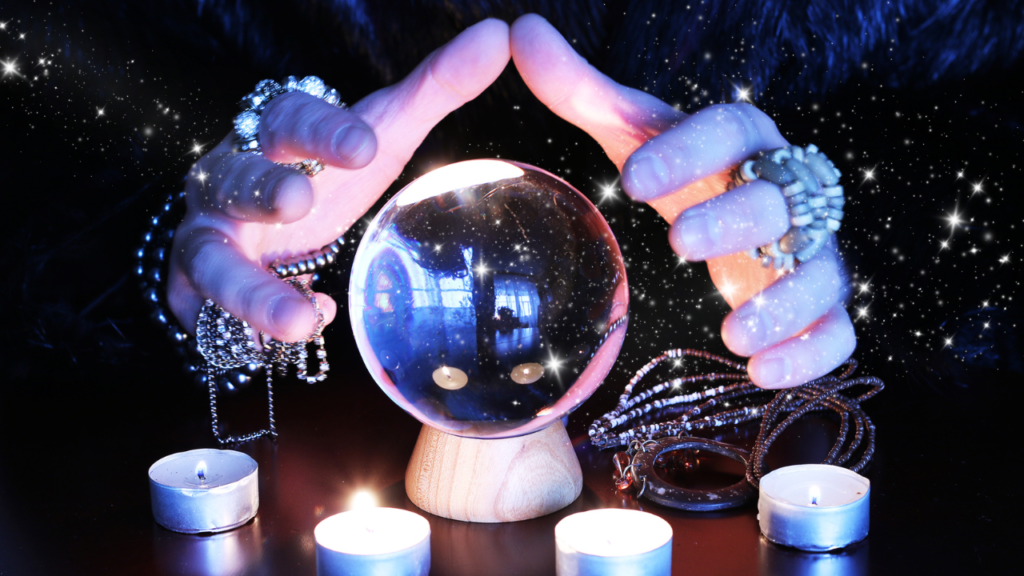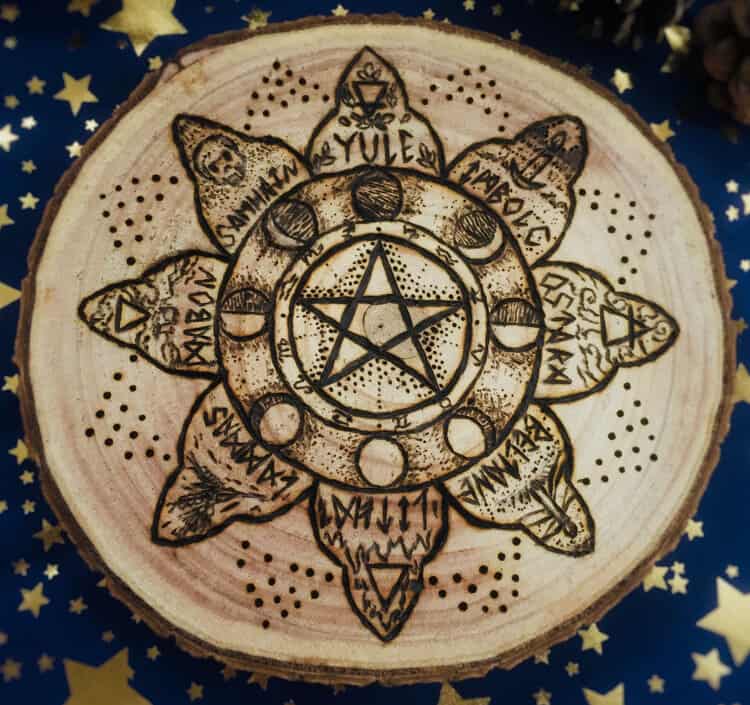Crystallomancy, also known as scrying, is a form of divination that has been practiced for centuries. This ancient art involves gazing into a crystal ball, a clear or colored sphere made of glass or crystal, to gain insight into the past, present, or future. The use of crystal balls for divination dates back to early civilizations such as the ancient Egyptians and Romans, and it continues to be a popular practice today. In this post, we will explore the origins of scrying and the various ways in which crystal balls are used for insight and guidance.
The Ancient Origins of Crystallomancy
Diving into the pages of history, we find that crystallomancy, which is a captivating form of divination I might say, traces its roots back to the ancient societies of the Celtic Druids, Greeks, and Romans. These early civilizations were known to use reflective objects like beryl crystals for divination and fortune-telling, marking the inception of the mystical practice of crystal gazing.

The sparkling, mysterious allure of the crystal balls allowed psychics to enter a trance and access the hidden realm of knowledge and visions not apparent to the ordinary eye. An intriguing fact about crystallomancy lies in its association with the high priests and priestesses of yore. This association further cemented its reputation as a sacred and mystical practice, shrouded in enigma. The rich history of crystallomancy reveals how its timeless appeal has been intertwined with human civilization, sparking curiosity and fascination over the millennia and has a firm foot in today’s witchcraft practices.
Crystal Balls in the Medieval Period
As we step into the medieval era, the utilization of crystal balls did not wane but rather gained momentum, securing an essential role in religious activities and arcane practices. They particularly gained popularity amongst the magicians and prognosticators of the time, who utilized the public’s intrigue with the unknown to their advantage. These seers, as they were commonly referred, exploited the mysterious allure of the crystal balls to glimpse into the future or uncover concealed truths. This period also saw a darker side to the art of crystallomancy, as these crystal gazers were often at the receiving end of accusations of witchcraft and heresy. This prevalent sentiment reflected the suspicion and apprehension towards this mystical practice during the Middle Ages, clearly underlining the societal tension between fascination and fear.
The Composition and Creation of Crystal Balls
Crystal balls are commonly crafted from clear quartz or glass. They are meticulously formed to harness their inherent mystical properties. These materials are highly sought after for their transparent and reflective qualities, which are fundamental to the practice of crystallomancy. The formation process is labor-intensive and requires a significant degree of craftsmanship. It starts with the rough carving of a crystal, which is then painstakingly polished to achieve a flawless, translucent finish that’s crucial for divination.

However, contrary to popular belief, crystal balls are not always perfect spheres or entirely clear. In fact, some of them feature smoky hues or a splash of color, and their shapes may vary. Each crystal ball is unique, and these variances are thought to add to their individual psychic abilities, enhancing the spiritual connection between the user and the crystal. Every crystal ball, regardless of its physical characteristics, carries its own vibrational energy that can resonate with the user’s intuition, thereby amplifying the divination process.
It’s important to note that the creation of a crystal ball is not solely about its physical formation. There is an element of sacredness attached to it. The process involves imbuing the crystal with intent and energy, turning it into a tool that can aid in connecting with the metaphysical realm. In the hands of a seasoned practitioner, a crystal ball becomes more than a decorative object – it transforms into a powerful conduit for accessing inner wisdom and gaining insights into the future.
The Modern Use of Crystal Balls
Crystal balls in contemporary times have found their utility extending beyond the stereotypical psychic or fortune teller. They’ve become a prevalent feature in many homes as aesthetically pleasing decorative pieces, adding an element of mystique and elegance. But their usage goes beyond just ornamentation. Many individuals have integrated them into their personal spiritual and magickal routines. They serve as a meditative tool, aiding in achieving a tranquil state of mind, fostering energy healing, or facilitating the manifestation of personal intentions.

Crystal balls have also found their place in the discipline of feng shui. Known for their capability to disperse and magnify positive energy, they’re used to balance the energy flow within a space, creating a harmonious environment. Whether it’s used as a piece of home decor, a spiritual instrument, or a feng shui element, the modern use of crystal balls resonates with its ancient origins, bridging the gap between the past and present. However, their role today goes beyond the spiritual and decorative, they also serve as a testament to human fascination with the unknown, providing a tangible link to the rich history of mysticism and divination.
Understanding How to Use a Crystal Ball
Acquiring the skill to utilize a crystal ball demands dedication, concentration, and receptivity. It’s important to remember that the magick does not lie in seeing explicit images within the ball itself, but instead in employing it as a conduit to enter a contemplative state and access your own innate intuition. Most seasoned crystallomancy practitioners suggest beginning each session with a calm and clear mind. Concentrate on a distinct question or matter you wish to explore and let the visions or sensations naturally present themselves. It’s critical not to attempt to control or direct the process but to allow the inherent energy of the crystal to steer your experience. Like learning any new skill, practice and patience are key to mastering the art of crystal gazing.

Crystal Balls and Skepticism
Notwithstanding their extensive history and widespread utilization, crystal balls and the practice of crystallomancy often encounter skepticism. Detractors typically regard it as superstition or trickery, with some labeling it as pseudoscience. However, practitioners and advocates of crystallomancy counter these critiques by emphasizing the critical role of the user’s ability to access their intuition and subconscious mind. They posit that the true potency of the crystal ball is not housed within the object itself, but in the user’s capacity to channel their inherent psychic faculties. Much like any other spiritual practice, the merit and credibility of crystallomancy are principally a matter of personal conviction and subjective experience. If you are drawn to the crystal ball and want to use it it in your life, maybe you have an untapped skill that’s just waiting to be discovered!












